A bUNDLE OF thousands of dollars worth of courses, guides, & resources curated specifically to help photographers!!!
ENTER HERE >>>
DOORS OPEN MONDAY MARCH 4TH!!!
THE
CREATIVE
COLLABORATION
HARSH LIGHT
February 9, 2021
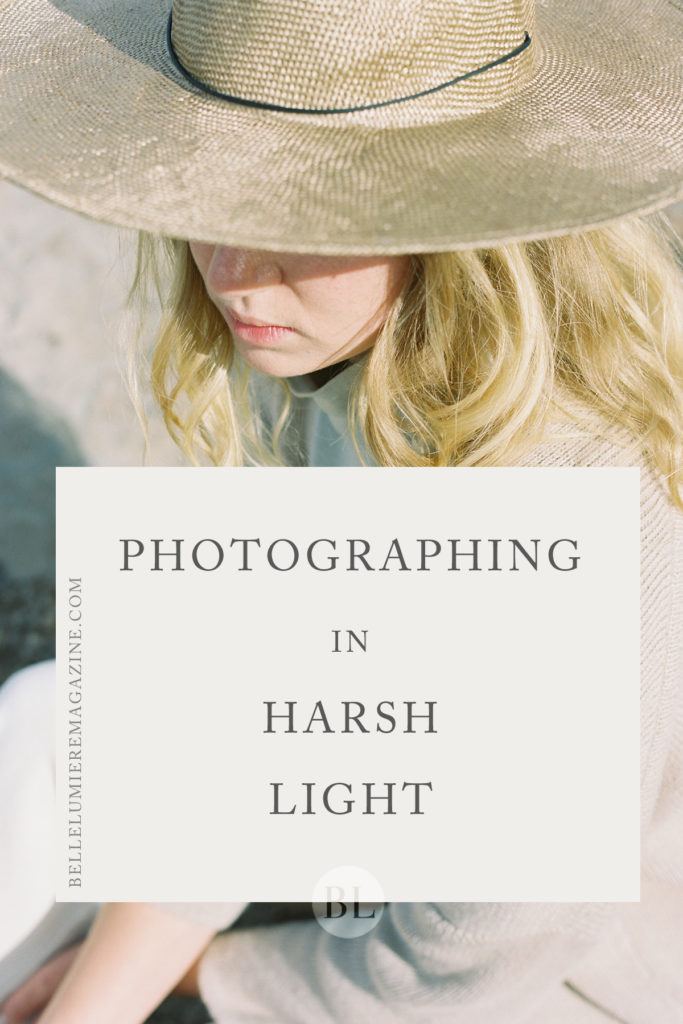
The first bit of photography advice I ever received was to seek open shade. The assumption was that open shade had the best light. The reality is that open shade gave me, the inexperienced photographer,an easy win.Even and predictable it offered a consistently easy exposure I could nail without too much trouble. But the problem was it got boring.
Light in real life isn’t boring. In fact it’s exciting and special and changes depending on where you are in the world and what time of day it is. It can bend and reflect and bounce in a hundred beautiful ways that only happens in that particular way at that moment, until it’s gone. It can be pink or orange or blue. It can fill a room or highlight a corner. It can be soft and ethereal with a painter’s quality, but it can also be harsh with deep short shadows and strong highlights. It is this kind of light, the harsh light, that I find so much more interesting than the even light found easily in open shade.
Harsh light is exciting. It is high in contrast with deep sharp shadows and bright sometimes unforgiving highlights, but that doesn’t mean it has to be challenging. In fact it has the potential to create mood, enhance texture, and enrich your portfolio with varied and interesting imagery. It’s a new tool you can add to your belt, so stretch your photography muscles and try something new.
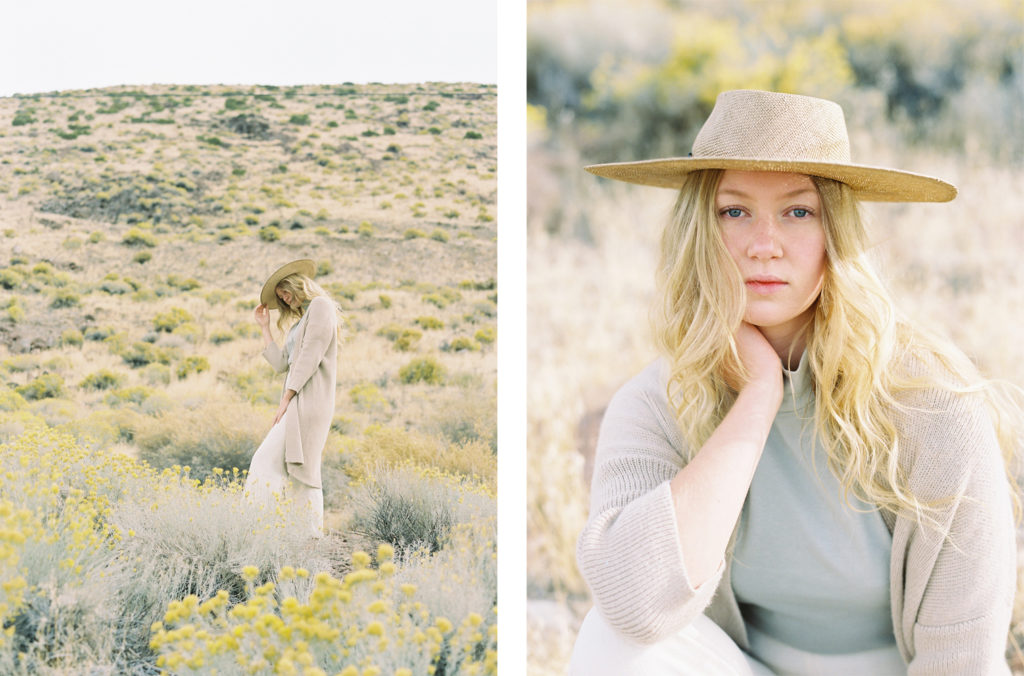
But first, What is harsh light?
Harsh light happens when your light source is smaller than the subject you are photographing. When outside, if you can stretch your arm in front of you and cover the sun with your thumb, it’s harsh light. When the light source is small relative to your subject the light has more of a point source. This means it has a shorter range which creates those distinct and deep shadows combined with intense highlights.
If you’re having trouble visualizing or questioning the light, put your finger in front of your hand and take a look at your shadow. If your finger is dark and has a clear outline the lighting is harsh. If your finger’s shadow is faint and fades the lighting is soft.
When we attempt to photograph in this scenario it can be difficult to maintain details in both the highlights and the shadows because the dynamic range from dark to light is much wider than our cam- era is capable of capturing. We might feel like we have to sacrifice either the shadows or the highlights. Or because of our artistic preferences we might just not like the look.
However, that’s what makes it so exciting. By recognizing your light and embracing the contrast you get to create a new kind of mood, explore new compositions, and push yourself into something altogether new.

The first and most obvious way to handle harsh light is to soften that contrast between the highlights and the shadows. The easiest way to do that is to shoot your subject backlit. By placing your subject with the sun behind them they automatically have a nice even light across across their face and body entirely. The shadows are softened and it’s easier to maintain detail.
However, using backlight can also be tricky. Use a lens hood to minimize flair and haze and be mindful of the light hitting your lens. Backlight also runs the risk of a blown background, or loosing the details in a particularly bright backdrop like the sky or water. Protect your background by shifting your angle from up above or shooting into a darker background. You can also use a reflector, placed beneath and in front of your subject to put more light back onto your subject. I especially love to look for locations with naturally occurring reflectors like water, sand, or cement to place my subject(s) on so the light will naturally be reflected back onto them.
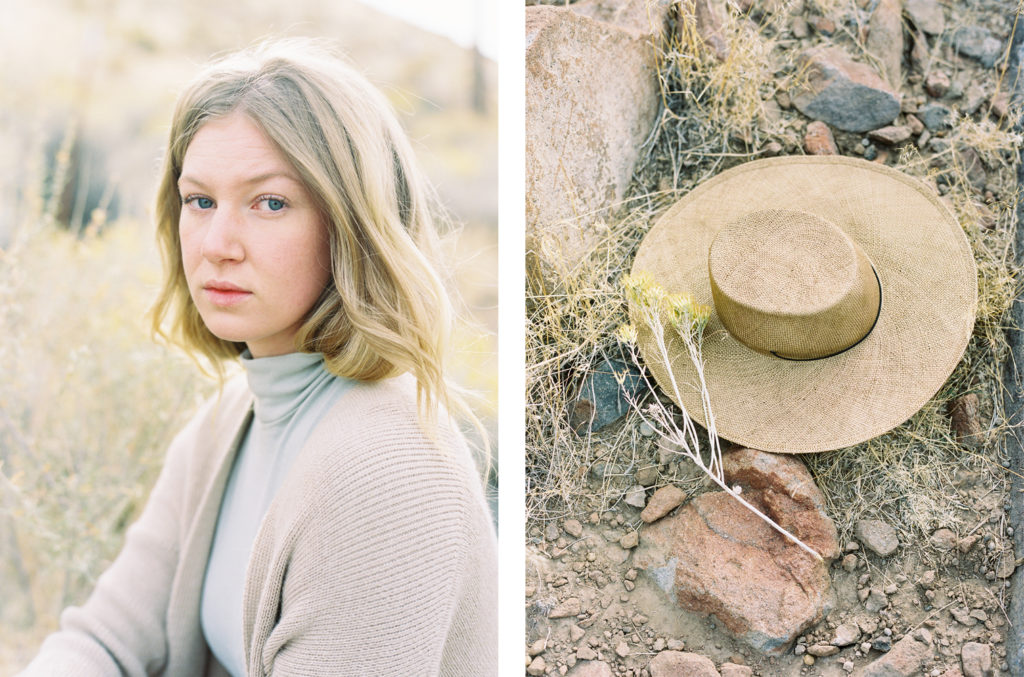
I used quite a bit of backlight during this shoot because I wanted to create a softness in line with the neutral wardrobe and soft hair around the model’s face. I think it was most successful when I was able to capture the rim light behind her. It created the most beautiful glow through her hair and also gave me even light on her face and body.
Harsh light also has the most amazing side light. Side light is always beautiful for creating depth, but when the light is harsh and coming from the side the texture of your subject will really pop.
If there is something about your subject that you would like to highlight try seeing how it pops by placing your light source to the side. Rotate that light source from 45 degrees behind to directly side to 45 degrees in front and see what catches your eye. You may be surprised by how beautifully those shadows bring your attention to the folds of a dress, the wisps of hair, or the texture of the dirt.
Shooting with side light you are not diminishing the contrast between the light and the dark but rather embracing it to its fullest. This is definitely the trickiest so metering correctly is key. With film we are lucky and have an incredible dynamic range, but we must still be thoughtful and meter carefully. I like to meter for the shadows or midtones then scan for the highlights. By default most of our labs are scanning for the shadows, but when using harsh light I want my highlights to be spot on and let my shadows fall on the darker side.
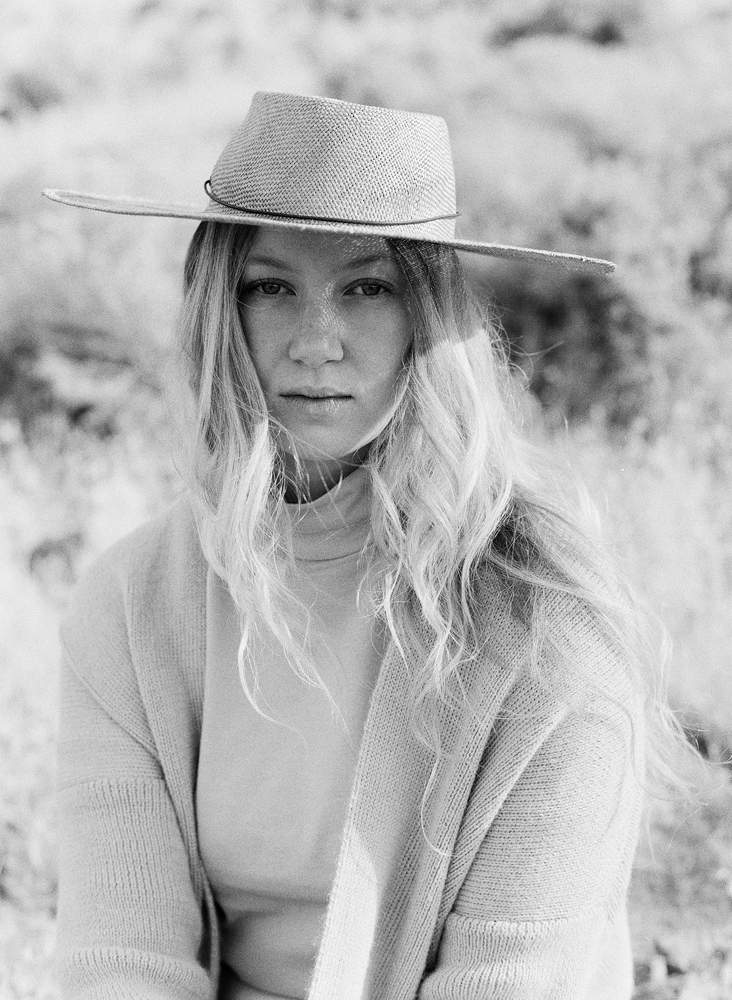
When shooting from the side I also like to switch from color to black and white. Black and white film was made for contrast and it just handles it so beautifully.This is the perfect time to play with shadows. Where do they fall? How can you add interest with shadows from the hands, the hair, a hat? What in your surroundings can cast interesting shadows that will add to the story you are trying to tell? This is when I love to see what those deep shadows and bright highlights can do for me. Rather than always trying to find ways to minimize the contrast I love to find ways to embrace it.
I definitely took advantage of the heavy shadows and used black and white film to enhance the depth the light was giving me. I loved the dark shadows under the hat and over her clothes. It reminded me perfectly of the many western movies I love and shows the intensity of the heat in the desert.
Lastly, you can face your subject directly into the sun and completely embrace the highlights. Using your light this way is another way to keep the light even across your entire subject. It will also give you glowing skin, sparkly eyes, and bold color. Often the skin picks up the warmth of the sun and will be slightly off your normal skin tones. Embrace the warmth and glow it gives. It’s beautiful and translates into summer and warmth.
Having your subject face the sun does have a few challenges. While it can give your subject beautiful sparkly eyes the challenge here is the squint. You have to decide how much squint you want. If you want less try having them look away from you, close their eyes, or use their hand to shade their eyes creating an interesting shadow across their face.
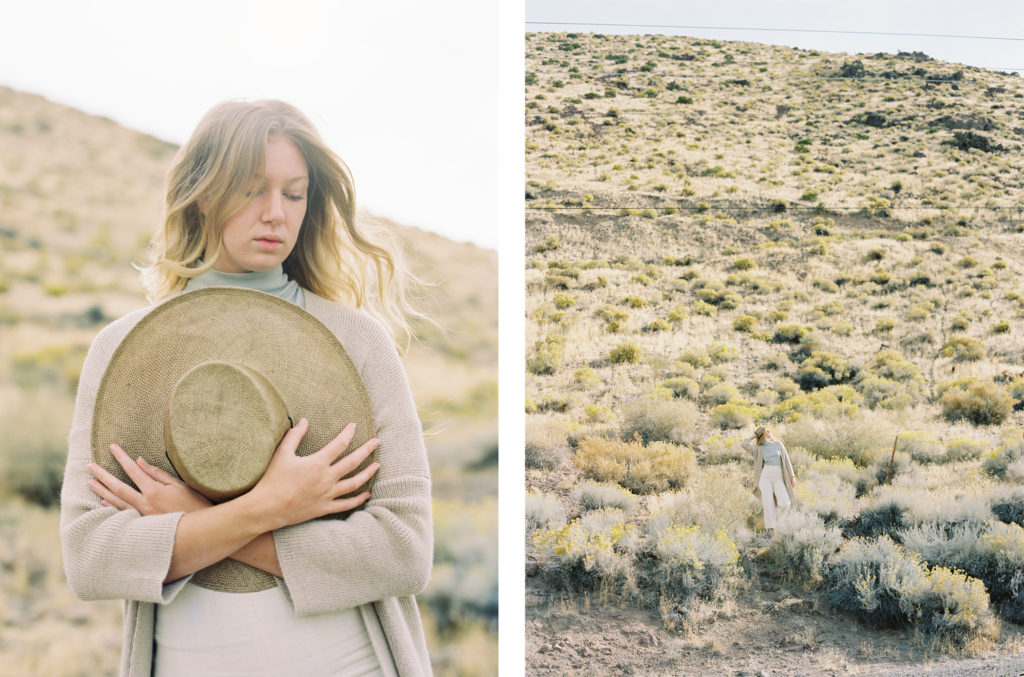
Using the directional light is also a perfect moment to explore movement. Capture your subject candidly in motion in the beautiful landscape you are photographing in. It’s a beautiful way to establish location and bring out the beautiful color of your surroundings.
I love the capture where you can see her eyes directly into the sun. They shine and her skin takes on the glow of the sun. It’s a more interesting and dynamic portrait than the softer backlit ones. It also creates more strength and shows grit more than the ethereal ones earlier in the shoot.
By using the light in all these ways: backlit, side lit, and directionally the shoot is multidimensional and tells a more complete story of a woman as she experiences the desert.
Shooting in harsh light is really all about mindset. Arm yourself with ideas of how you want to use the light. Knowing your mood, your location, and your subject will allow you to visualize and prepare beforehand. Be confident in what you want to communicate. Incorporate elements that inspire you. It’s not an exact science. What appeals and resonates is unique to you, but don’t be afraid to go out and try new things! Learn from doing it!

Sara Weir
Sara is a film photographer and educator living in the high desert. She is known for inspiring photographers everywhere to convert
to film and tap into the power of its creative process. When she
isn’t educating she is crafting portraits for other artists and creating content for thoughtful brands. Her secret sauce is in the process and she loves supporting and helping other artists be successful. When she isn’t shooting film she loves spending time with her family outside hiking the hills behind her home and reading.
Saraweirphotography.com
@saramweir
Did you know this article is 1 of 40 articles included in our 2019 issue bundle?!! All of which can be grabbed up for 50% off (which is less than $8 an issue). CLICK HERE to learn more about volumes XIV – XVII!!